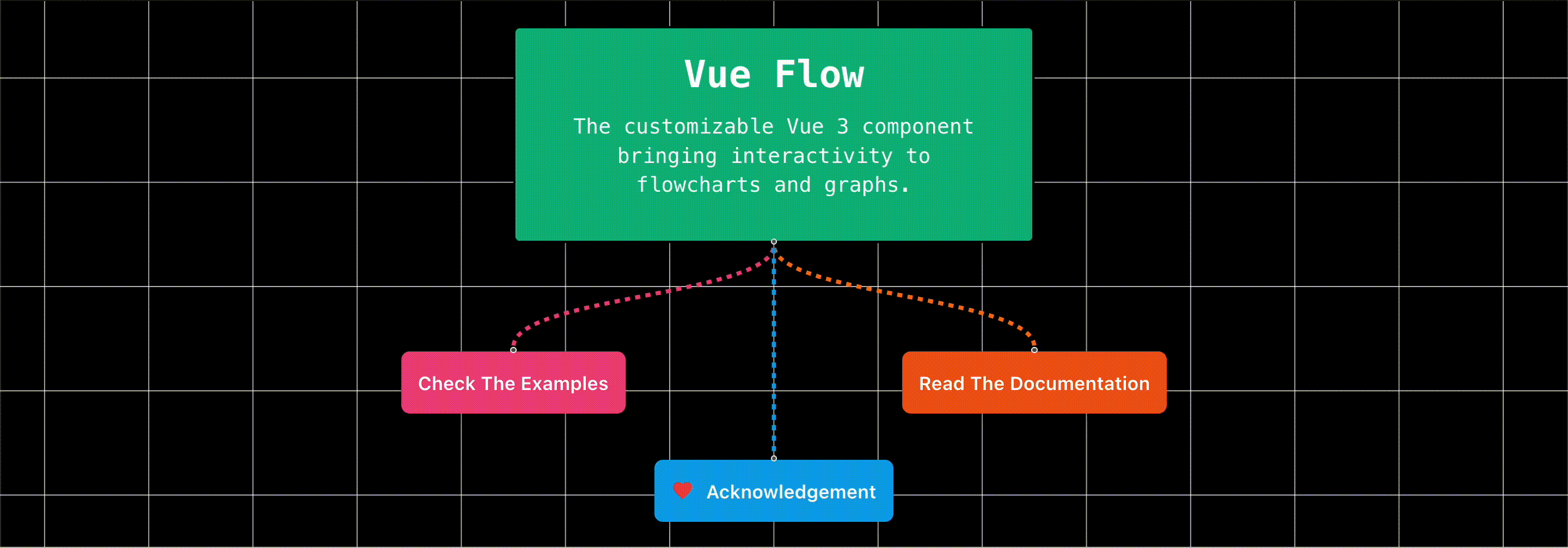3. custom node
ROS2에 대해 알아보자
3. custom node
Custom Node
- 기본적으로 제공하는 노드형태(input/default/output) 외에 커스텀한 노드 형태 정의 가능(노드/핸들/엣지)
사용방법 (커스텀 타입/v-slot 생성 방법 2가지가 있음)
커스텀 타입으로 노드 생성
- 커스텀 컴포넌트들을 생성 후 VueFlow 컴포넌트에 node-types 프롭스로 커스텀 노드 생성 가능 (커스텀 타입에 정의된 컴포넌트 렌더링을 수행)
1
2
3
4
5
6
7
8
9
10
11
12
13
14
15
16
17
18
19
20
21
22
23
24
25
26
27
28
29
30
31
32
33
34
35
36
37
38
39
40
41
42
43
44
45
46
47
48
49
50
51
## FlowCanvas.vue
## script
import VariableNode from './customnodes/VariableNode.vue'
const customNodeTypes: CustomNode = {
[CustomTypesDefine.VARIABLE_NODE]: markRaw(VariableNode),
}
## template
<div class="d-flex flex-column">
<div class="dnd-flow" @drop="onDrop">
<VueFlow
v-model:nodes="nodes"
v-model:edges="edges"
:node-types="customNodeTypes"
@dragover="onDragOver"
@dragleave="onDragLeave"
@connect="onConnect"
>
...
</VueFlow>
<FlowSidebar />
</div>
</div>
# Varible Node
<script lang="ts" setup>
import { Handle, Position } from '@vue-flow/core'
import { ref, watch } from 'vue'
const props = defineProps({
data: Object,
})
const emit = defineEmits(['update:data'])
const value = ref('')
watch(value, (newValue) => {
emit('update:data', { ...props.data, value: newValue })
})
</script>
<template>
<div class="input-node font-style">
<div class="d-flex flex-row justify-content-center">
<h1>Number</h1>
<input class="input-box" type="number" v-model="value" placeholder="Enter value" />
</div>
<Handle type="source" :position="Position.Bottom" />
</div>
</template>
템플릿(v-slot)으로 노드 생성
- 커스텀 컴포넌트들을 생성 후 VueFlow 내 template으로 생성
- scoped slot을 통해 자식 컴포넌트에서 올려주는 프롭스와 템플릿 값들로 노드를 생성 (ex. 노드 외에도 줌 패널/ 커넥션 라인 등 scoped slot으로 커스터마이즈 가능)
vue slot = > 부모가 원하는 콘텐츠를 삽입할 수 있지만, 자식의 데이터를 활용할 수 없음 scoped slot => 자식이 가진 데이터를 부모에게 전달할 수 있어서, 부모가 더 유연하게 렌더링할 수 있음. 동적 리스트, 재사용 가능한 UI 컴포넌트등 유연한 디자인이 필요할때 사용
- ref. https://vuejs.org/guide/components/slots
1
2
3
4
5
6
7
8
9
10
11
12
13
14
15
16
17
18
19
20
21
22
23
24
25
26
27
28
29
30
31
32
33
34
35
36
37
38
39
40
41
42
43
44
45
46
47
48
49
50
51
52
53
54
55
56
57
# App.vue
<script setup>
import { ref } from 'vue'
import { VueFlow } from '@vue-flow/core'
import { Background } from '@vue-flow/background'
import { initialEdges, initialNodes } from './initial-elements.js'
import ValueNode from './ValueNode.vue'
import OperatorNode from './OperatorNode.vue'
import ResultNode from './ResultNode.vue'
const nodes = ref(initialNodes)
const edges = ref(initialEdges)
</script>
<template>
<VueFlow class="math-flow" :nodes="nodes" :edges="edges" fit-view-on-init>
<template #node-value="props"> ===> 자식 컴포넌트의 템플릿( ValueNode.vue)을 받아와 렌더링을 수행하며, scoped slot 형태로 slot props를 받아와 랜더링 수행
<ValueNode :id="props.id" :data="props.data" />
</template>
<template #node-operator="props">
<OperatorNode :id="props.id" :data="props.data" />
</template>
<template #node-result="props">
<ResultNode :id="props.id" />
</template>
<Background />
</VueFlow>
</template>
# ValueNode.vue (id는 노드 생성 시 vue-flow에서 id 값을 관리하여 내려줌)
<script setup>
import { computed } from 'vue'
import { Handle, Position, useVueFlow } from '@vue-flow/core'
const props = defineProps(['id', 'data'])
const { updateNodeData } = useVueFlow()
const value = computed({
get: () => props.data.value,
set: (value) => updateNodeData(props.id, { value }),
})
</script>
<template>
<input :id="`${id}-input`" v-model="value" type="number" class="nodrag" />
<Handle type="source" :position="Position.Right" :connectable="false" />
</template>
Ref. https://vuejs.org/guide/components/slots#slot-content-and-outlet
This post is licensed under
CC BY 4.0
by the author.
